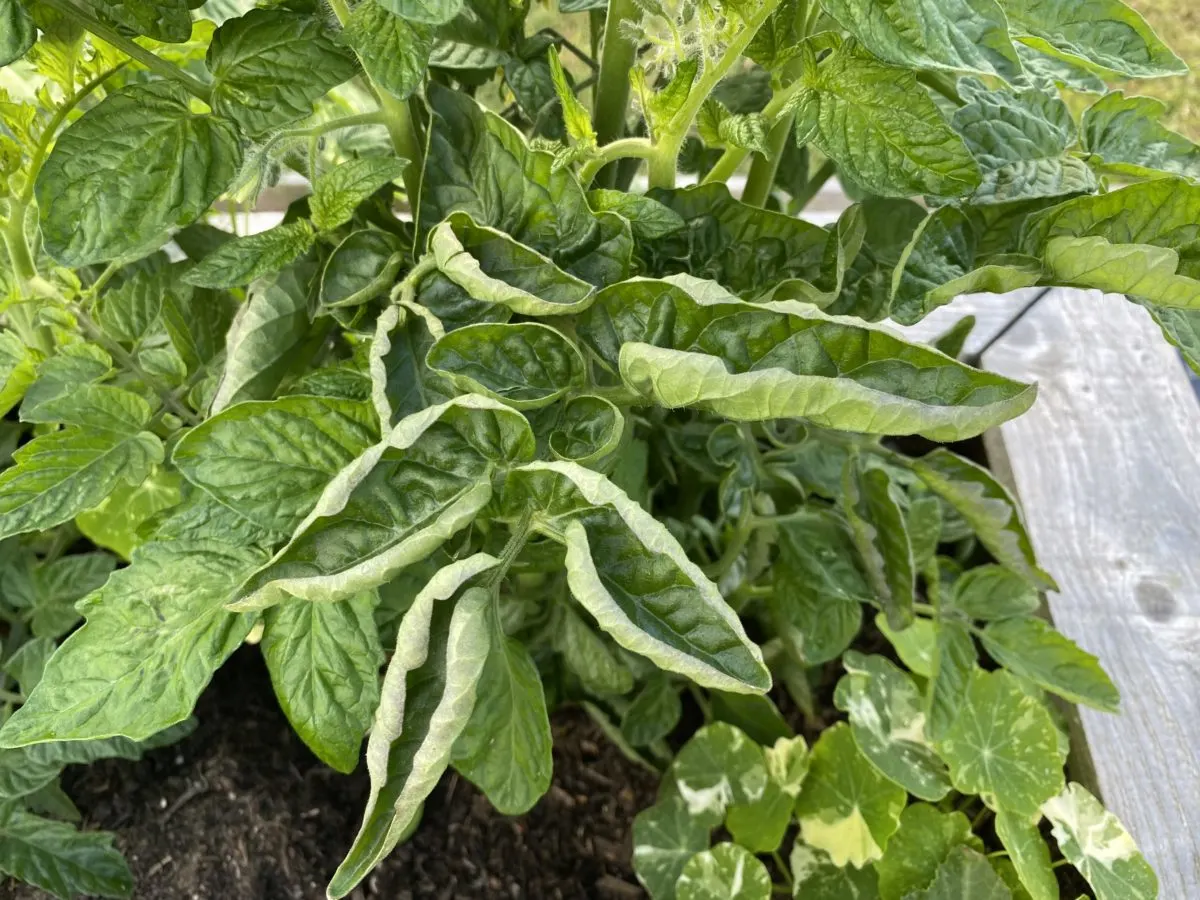
Of the several problems that may present themselves in tomato plants, leaf curl is one of the most common.
This condition, also called leaf roll, worries many new tomato gardeners. But fear not – there is usually no cause for alarm.
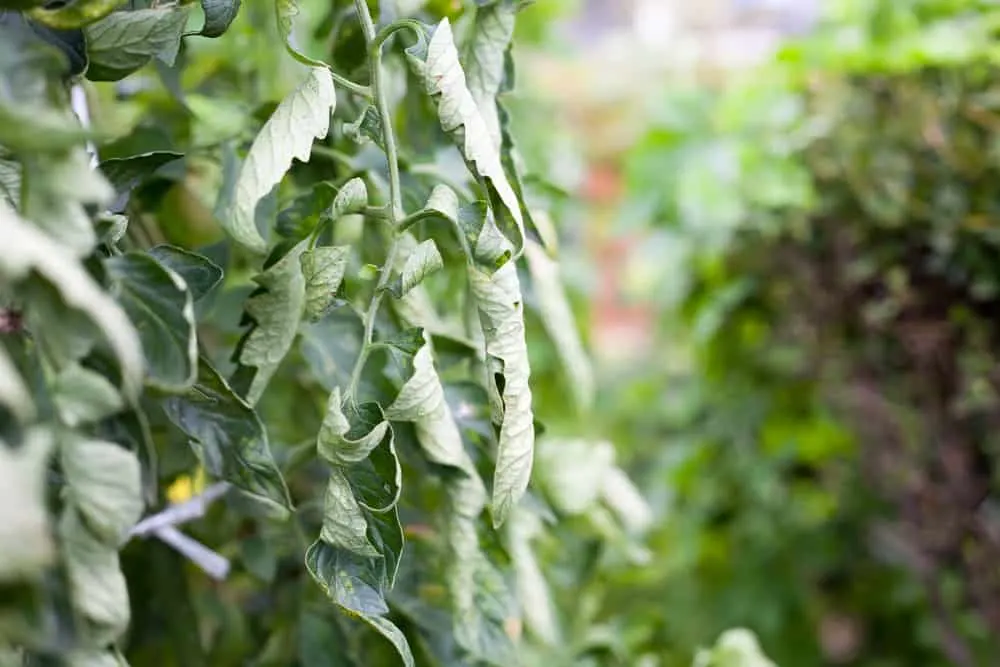
Most causes of leaf curl are stress-related. While stress is not ideal for plants, it’s not fatal and usually won’t affect your yield long term. Once you’ve identified the problem, apply the fix and your plants should go back to normal.
Other causes of leaf curl are not as easy to solve. Herbicide exposure and viral disease are far less common, but much more damaging to the plants. You may have less yield, no yield at all, or worse – a dead plant.
Due to the vast differences in severity, it’s important to be sure of the cause of your tomato leaf curl before you act. Take a look at these seven common causes. Your problem is likely easier to solve than you think.
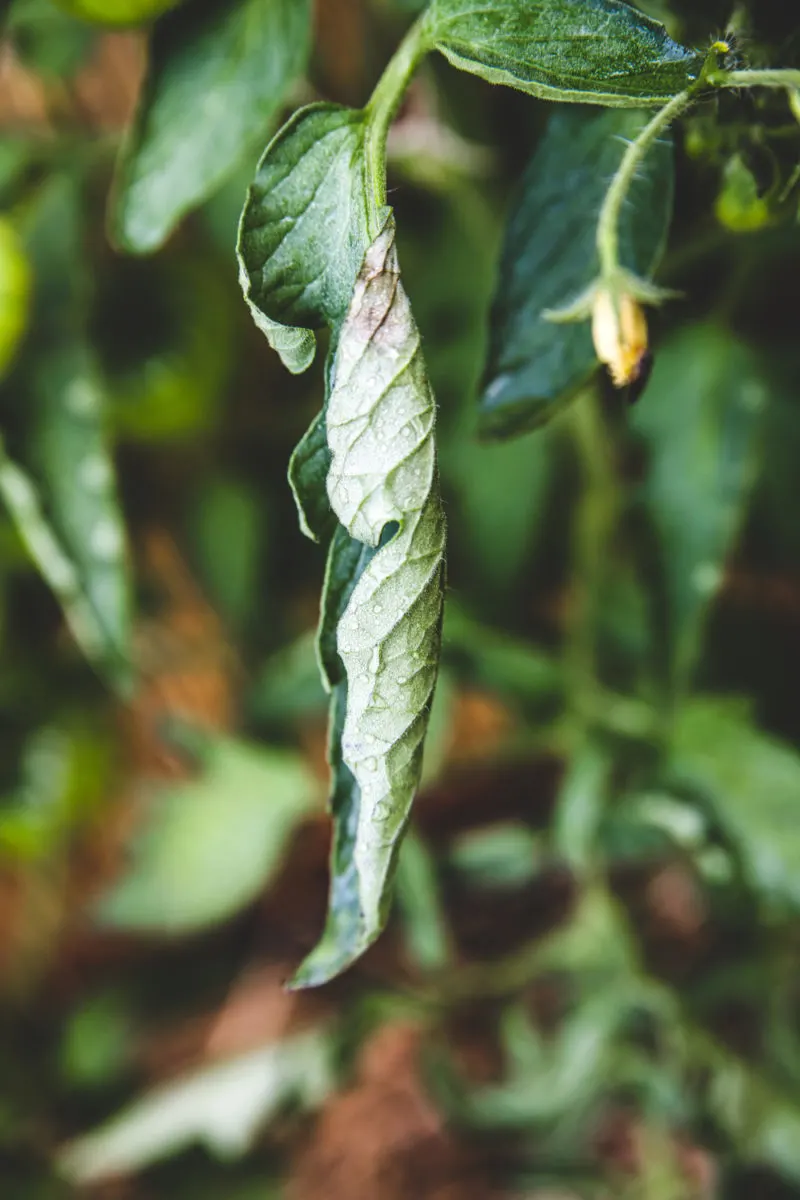
1. Incorrect Watering
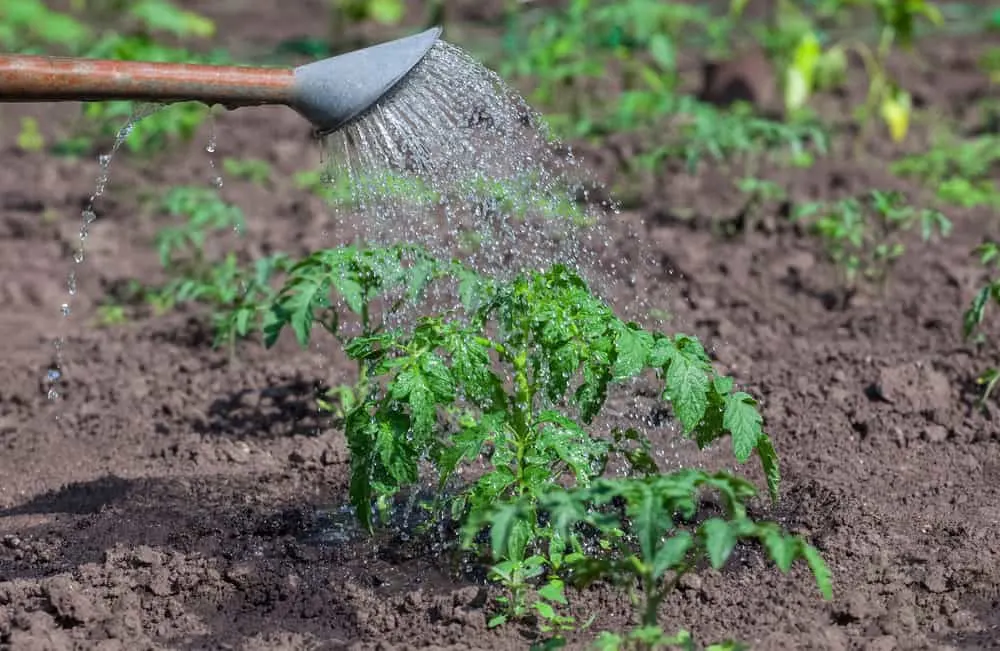
It goes without saying that watering is vital for all parts, but this is particularly true of tomatoes. The plants need plenty of water, especially for the formation of juicy fruits. Because of the importance of watering for tomato plants, they can be pretty fussy when watered incorrectly.
Both under and overwatering can cause plant stress. Underwater and the plant can’t function correctly; overwater and you’ll damage the roots so the plant can’t function correctly. The stress created by these conditions is thought to cause the leaves to curl inwards.
While overwatering is a potential cause, other symptoms are likely to present themselves long before the leaves begin to curl.
Underwatering is the far more likely cause. When the soil is not watered frequently, water cannot be transported to the plant cells which helps the plant stay rigid. The leaves begin to curl inward to prevent any further water loss from exposure to the sun.
To prevent these issues, check out this complete guide to tomato plant watering. Once you adjust your watering schedule, the leaves should return to normal.
2. Excessive Heat
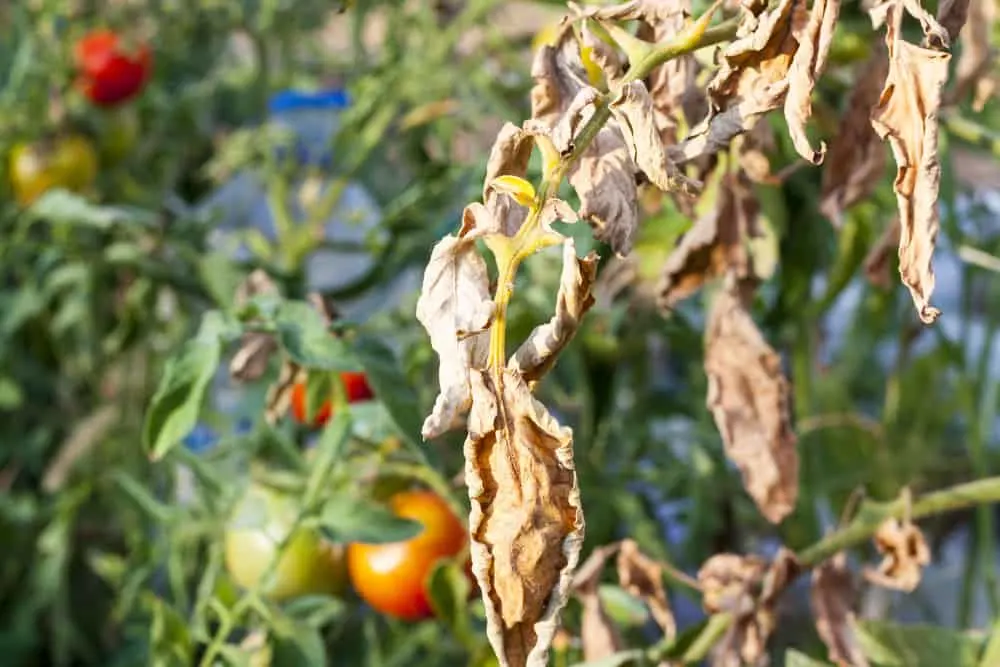
The cause that goes hand in hand with underwatering is excessive heat. This problem is also caused by lack of water, but may not be the fault of the gardener entirely.
In summer, when the weather begins to heat up and the sun becomes more intense, tomatoes may struggle to adjust. This seems paradoxical – tomatoes are sun-loving plants after all – but when temperatures stay above 85F consistently, the plants face heat stress.
The increased heat raises the rates of stomatal transpiration, the process of water loss from the leaves of the plant. Again, the leaves curl inwards to protect the plant from the sun and avoid further water loss.
There are several ways to protect your plants from excessive heat. You can install shade cloth to cover your plants in the hottest part of the day, leaving them fully exposed to the sun in the morning and late afternoon. The process is far easier when your tomatoes are planted in containers – simply move them to a shadier spot.
Alternatively, you can wait for the heat to subside before it does too much damage. Once the temperatures drop, the leaves should return to normal.
3. Too Much Nitrogen
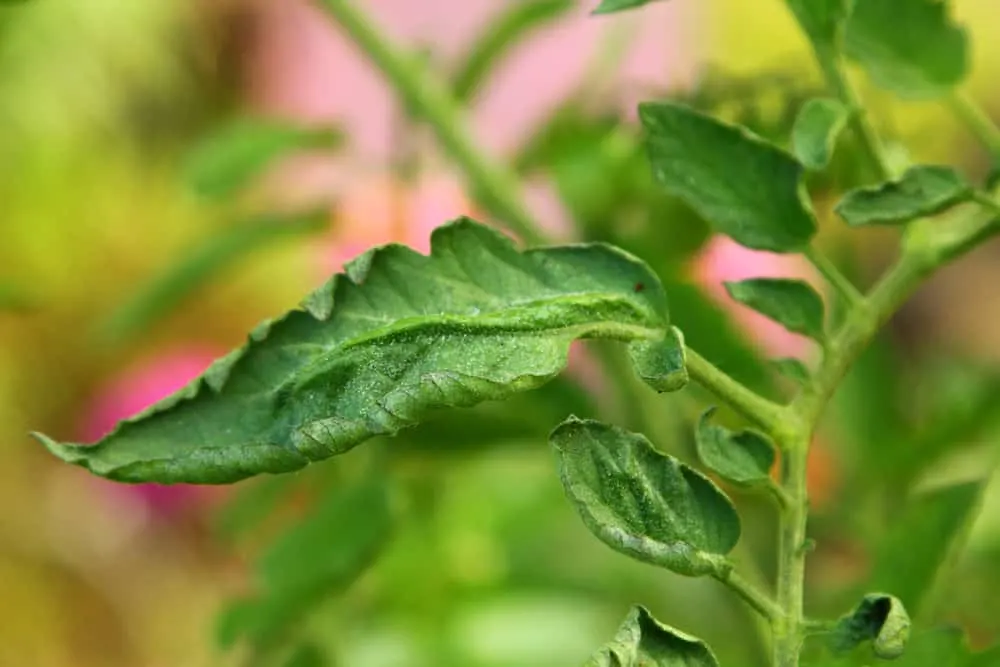
When first planting tomatoes, it’s best to use a balanced fertilizer containing a good mixture of nitrogen, phosphorus, and potassium. But when the plant has reached maturity and starts producing fruit, a phosphorus and potassium fertilizer is recommended as those are the nutrients needed for flowering and fruiting. Too much nitrogen applied at this stage can cause problems with the leaves, including curling.
When there is excessive nitrogen in the soil, the plant focuses on leaf production. However, when the plant is producing fruit, this unusual focus on the leaves causes them to become intensely green, thick, leathery, and rolled.
Problems with extra nitrogen typically resolve themselves over time. As leaf curl has little impact on the plant yield or overall health, there is no need to apply a fix – simply wait for them to return to normal.
The best way to help your plants in this case is prevention. Ensure you apply the right fertilizer for the plant at the right time. Always follow the instructions exactly to avoid overfertilizing.
4. Excessive Pruning
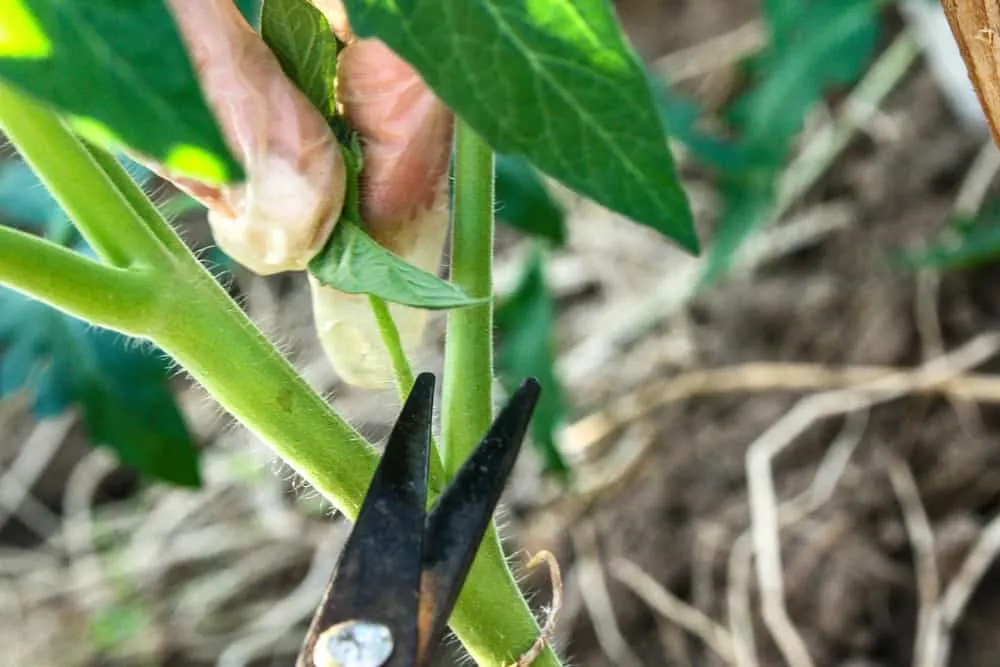
Pruning tomato plants is a controversial topic. Some gardeners say it is essential, others say it does more harm than good.
No matter which side you fall on, you can be sure of one thing – excessive pruning is never a good thing. It can cause a host of problems, one of which is leaf curl.
Pruning your tomato plants more than necessary results in stress which, as we’ve found, causes the leaves to curl. It also exposes more of the plant to the sun, making it susceptible to the heat problems discussed before.
Indeterminate tomato plants may benefit from a slight pruning by pinching off the suckers between the main and lateral stems. The removal of a very small amount of leaves may also improve growth and air circulation. However, it’s vital to exercise restraint when pruning. Never take off more than is necessary, and never prune determinate tomato plants.
If your plant is in the process of recovering from an intense pruning session, leave it be. Any more unnecessary interaction with the plant may cause more damage while it is still vulnerable. The stress should resolve itself in a couple of weeks with the leaves returning to normal.
5. Transplant Shock
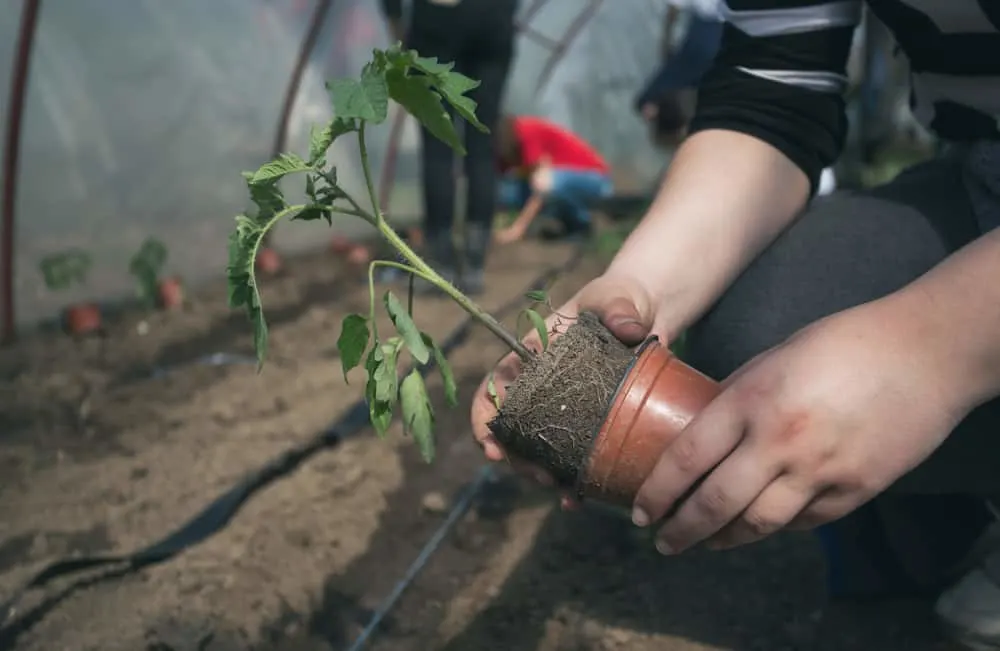
If you notice leaf curl in a recently transplanted tomato, the cause is usually transplant shock.
Whenever tomato plants are moved to a new spot, there is always a chance of root damage. Tomato roots are very delicate. Even the slightest nick can result in root disturbance. As the plant begins to settle into its new spot, it may show signs of this root damage through wilting, yellowing leaves, and – you guessed it – leaf curl.
Luckily, mild transplant shock is harmless. As with the other environmental causes, some patience is all you need. The plants will sort themselves out on their own in a couple of weeks.
6. Herbicide Exposure
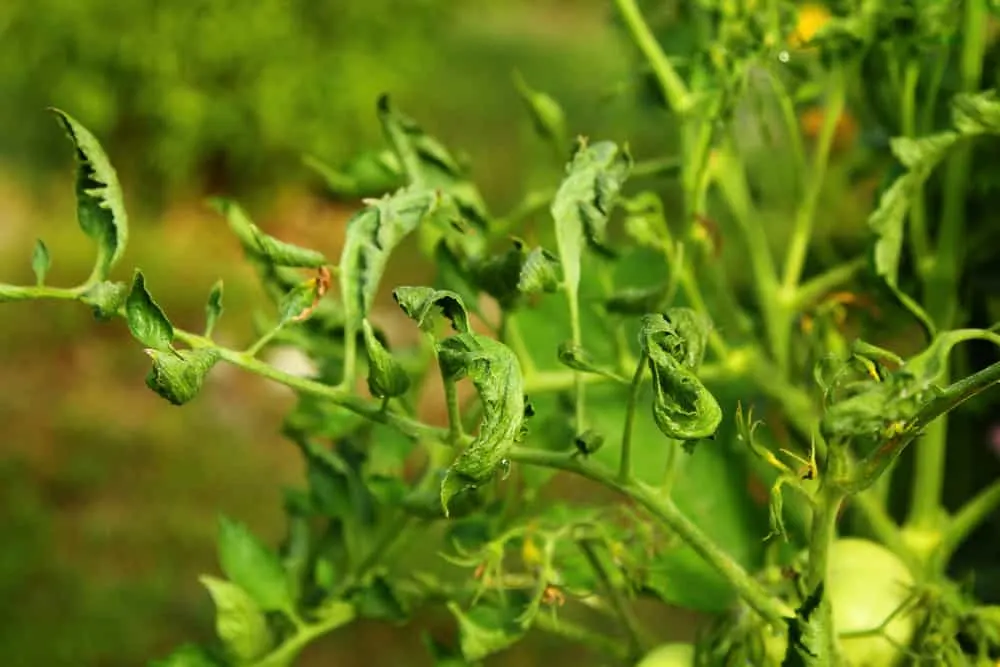
Tomato plants are incredibly sensitive to herbicides. 2,4-D or dicamba are the usual suspects, but there are several others that can cause leaf curl if they come into contact with your tomatoes.
This leaf curl is slightly different in appearance when compared to the stress-related rolling inwards present in the previous cases. When exposed to herbicides, the leaves tend to curl downwards and twist around the stem. New growth typically exhibits these signs first.
Unfortunately, there is no way to recover leaves damaged in this way. If the damage is mild, new growth may grow unaffected, but the yield of the plant will be impacted. If the problem is severe, the plant may not recover.
Luckily, this issue is not very common. Unless your garden is close to crops likely to be sprayed (or perhaps you’ve used herbicide in your garden), damage from herbicides is of little concern. A more likely cause of this abnormal leaf curl is one of the various viral diseases tomato plants are susceptible to.
7. Viral Disease
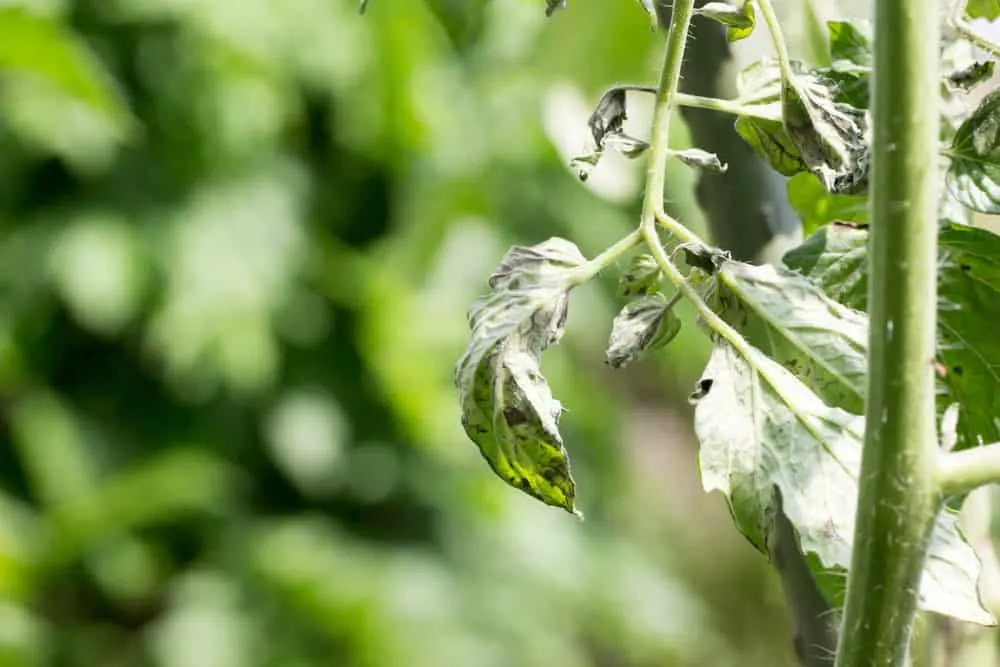
Disease is a word no gardener wants to hear – especially when it comes to the diseases that cause leaf curl.
Tomato yellow leaf curl virus is self-explanatory – the leaves curl and turn pale green or yellow at the edges. Rather than rolling completely inwards as in stress-related cases, this virus causes the leaves to turn slightly upwards in a cup-like fashion. It is spread by whiteflies who will carry the disease to all of the tomatoes in your garden, and any other tomato-related plants.
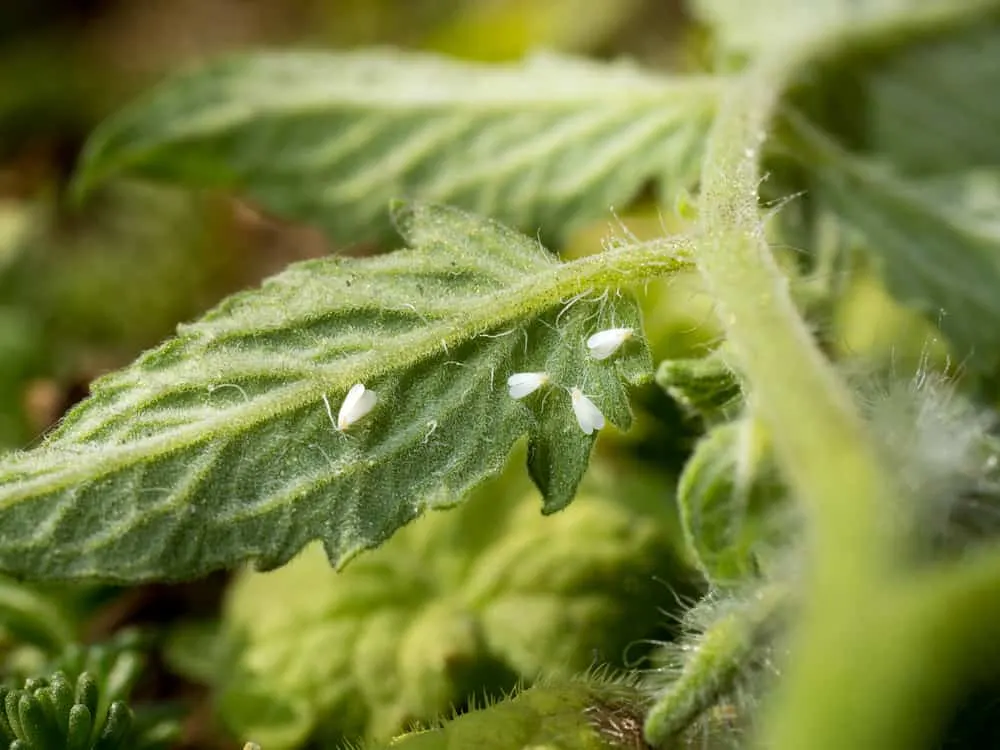
Tomato mosaic virus causes the leaves to roll inwards but is distinguished by other symptoms, like unusual spotted coloring on the leaves and browning of the inside of the fruits.
If your leaf curl problems are not solved by any of the previous fixes, you might be dealing with a viral infection. As with many other tomato diseases, these can be very dangerous, spreading to other areas of your garden and causing chaos. The diseases will also kill your plants in the long run, making any effort to resolve the problem futile.
Once you’ve identified any of the viral diseases that cause leaf curl, remove the plant from the garden immediately and destroy it – do not compost it.
Don’t let the doom and gloom of the herbicide and viral disease cause alarm – your problem is far more likely to be quickly fixable.
It’s also unlikely to harm your plants in the long run, and merely a sign that they could use some extra attention to stay healthy. Conduct a few gardening experiments to find the cause, and your tomato leaves will soon uncurl with no harm done.
